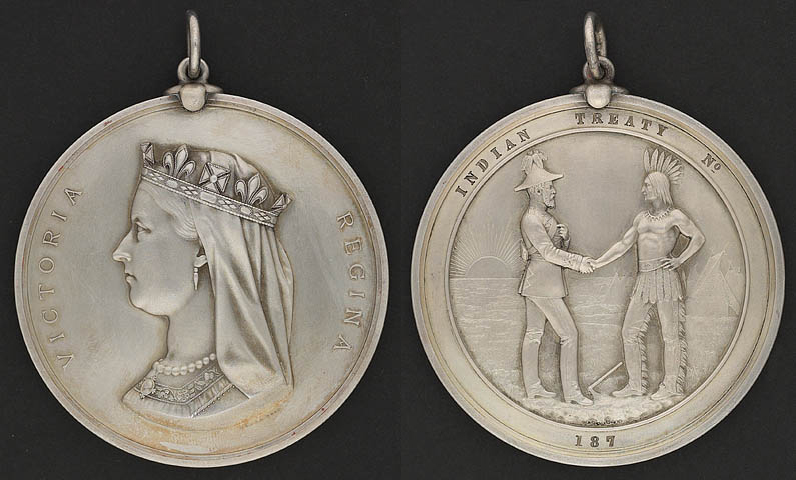Treaty 3 was signed between the Anishinaabe and the Government of Canada in 1873. Treaty 3 is also known as the North-West Angle Treaty. The goal of the government was to gain access to land. The land was located in what is known now as northwestern Ontario and eastern Manitoba. The goal of the Anishinaabe was to preserve their way of life. Like the other numbered treaties, Treaty 3 remains controversial.
This article is a plain-language summary of Treaty 3. If you are interested in reading about this topic more in depth, please see our full-length entry, Treaty 3.

Background
Canada became a nation in 1867. Soon after, the federal government aimed to attract immigrants to, and exploit resources in, the West. To do this, it first needed to acquire land. Indigenous peoples in Canada had lived on this land since time immemorial. They were deeply attached to the land. Thus, they did not want to give it up. That said, they understood that they would have to deal with the government eventually. The government knew that they would have to deal with Indigenous peoples as well. Treaty negotiations began between the Anishinaabe and the government in 1871.
Negotiations
From the start, both sides negotiated strongly. One area of disagreement regarded the amount of money the government should pay. The Anishinaabe believed that the offer made to them was too small. The government, on the other hand, did not want to pay much. By 1873, the government had an extra motive to make a treaty. It wanted to build a railway to connect Canada from east to west. Doing so would attract more settlers to the West. The route of the railway was planned to go through Anishinaabe territory. Therefore, the government needed to make a treaty more than ever. It still did not want to offer the Anishinaabe large payments. Another point of difficulty was that the Anishinaabe refused to give up all their territory to Canada. Still another point of contention was that the Anishinaabe aimed to continue hunting and fishing on their territory. As part of negotiations, the government offered to provide schools and land for farming.
Written Terms of the Treaty
One of the main terms of the treaty had to do with land. The Anishinaabe gave up a great deal of land to the government. The total amount of land was 14,245,000 hectares. The government promised the Anishinaabe that they could continue to hunt and fish on the land. But it stated that this could stop if the government needed the land. In addition, reserve lands were set aside for the Anishinaabe. As for money, $12 was to be given to each family of five once. Also, each person was to be given $5 every year after. The government also said it would pay for farming equipment.
Controversy
Treaty 3 was and still is controversial. For one, besides the written terms of the treaty, the government also made verbal promises. The government did not begin to adhere to these verbal promises until the early 20th century. In addition to this, the government did not give the Anishinaabe farming equipment for some time. They also did not receive the livestock the government promised until 1907. There were also disagreements between Ontario and the federal government. They fought over who owned treaty land. They also disagreed about how much land should be granted to the Anishinaabe. Perhaps the most controversial aspect of the treaty has to do with the extent to which the Anishinaabe understood the Euro-Canadian terms of the treaty. They did not believe they were simply giving all their land to the government. Rather, they believed that they would be sharing the land. Anishinaabe today continue to make these arguments. Therefore, they hold that the treaty could or should be reinterpreted.

 Share on Facebook
Share on Facebook Share on X
Share on X Share by Email
Share by Email Share on Google Classroom
Share on Google Classroom





